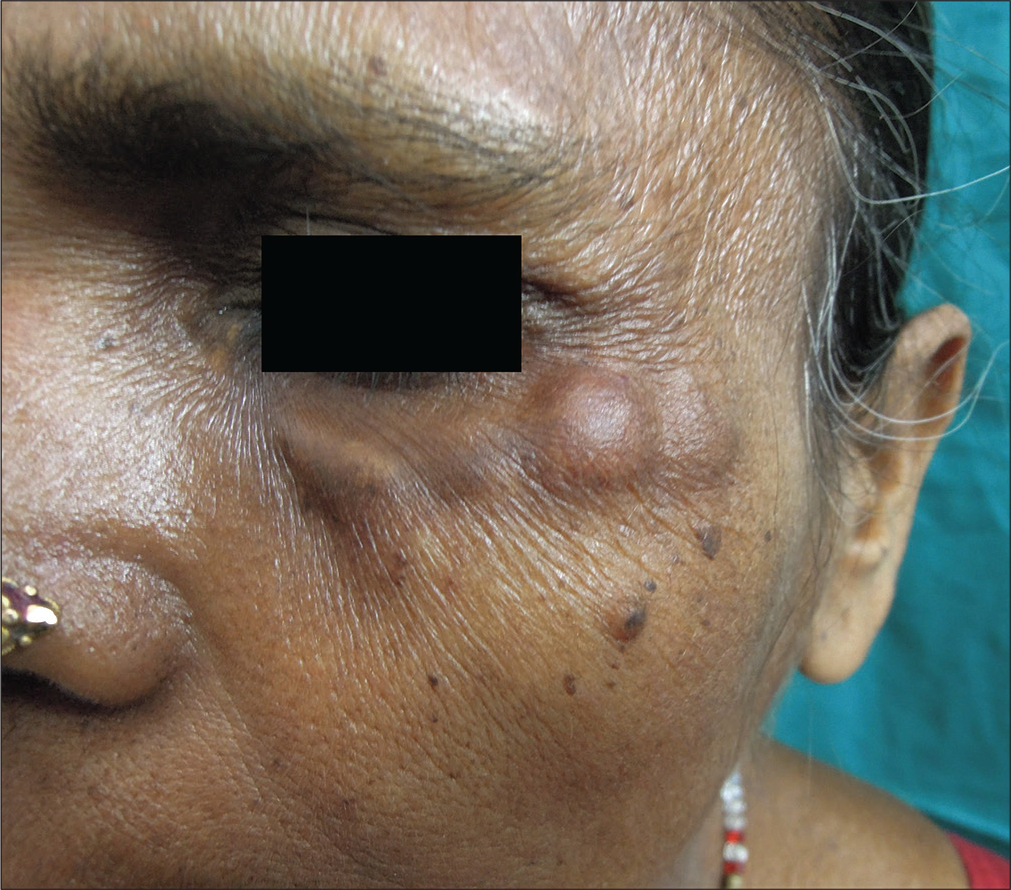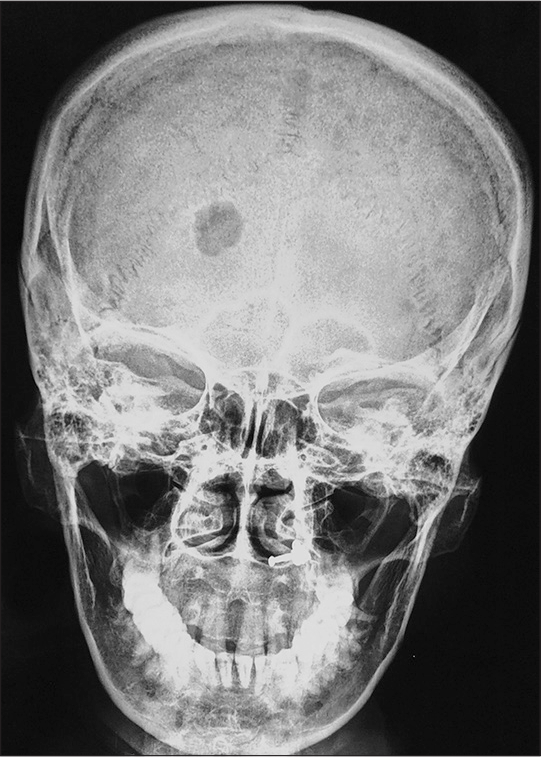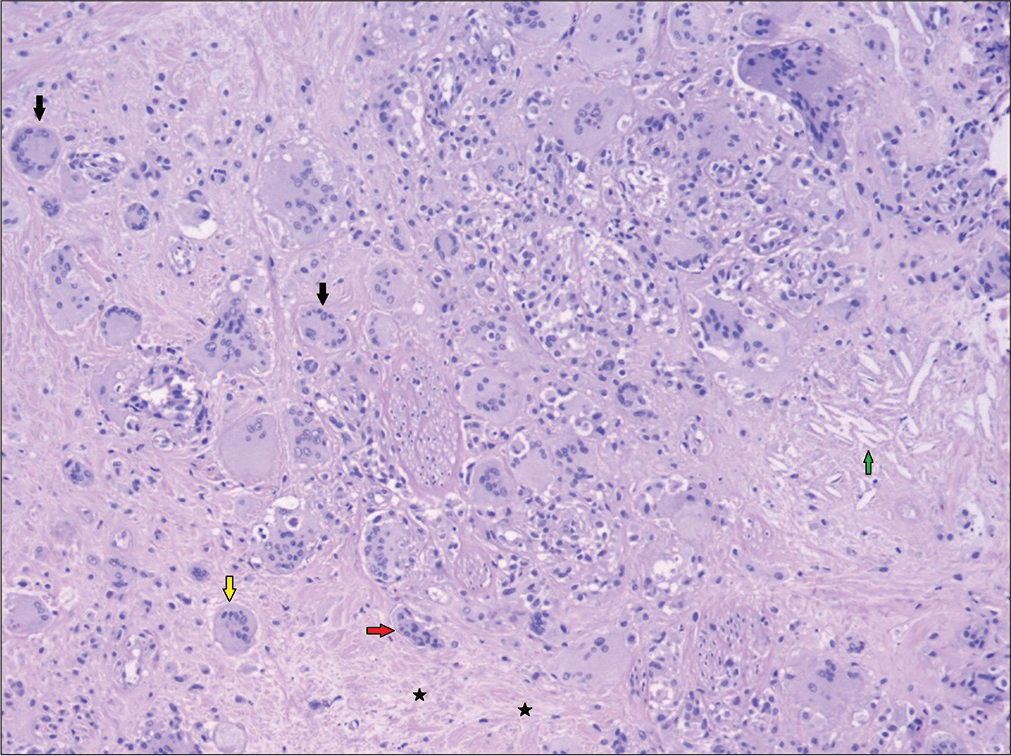Translate this page into:
Multiple reddish-brown and yellowish indurated plaques with pancytopenia and paraproteinemia
Corresponding author: Dr. Anup Kumar Tiwary, D 302, Jeevan Ashray Apartment, C 58/08, Sector 62, Noida, Uttar Pradesh, India. anup07tunnu07@gmail.com
-
Received: ,
Accepted: ,
How to cite this article: Makkar R, Dixit A, Tiwary AK. Multiple reddish-brown and yellowish indurated plaques with pancytopenia and paraproteinemia. Indian J Dermatol Venereol Leprol 2023;89:439-40.
A 52-year-old female presented in outpatient department of dermatology in Deen Dayal Upadhyay Hospital, New Delhi, with a solitary ulcer on the right leg for two months and multiple, asymptomatic, elevated, slowly progressive skin lesions on face, extremities and trunk for about three years. Physical examination revealed multiple, bilaterally symmetrical, yellowish and reddish-brown plaques on infraorbital region [Figure 1], left arm, left forearm, right infra-axillary area and calves. There was a well-defined, painful, deep ulcer of 12.5 cm × 7.5 cm size on lower third of the right leg.

- Yellowish and reddish-brown plaques on infraorbital region
Systemic examination disclosed moderate splenomegaly. Skeletal survey showed punched-out lytic lesions on skull [Figure 2]. Routine laboratory investigations showed pancytopenia (haemoglobin 7.1 g/dl, total leucocyte count 3640/μl and platelet count 109/μl), raised erythrocyte sedimentation rate (120 mm/h), slightly elevated total serum protein level (8.60 g/dl) and hypoalbuminemia (2.94 g/dl). Serum protein electrophoresis showed M spike with hyper-gamma-globulinaemia (3.53 g/dl) along with highly raised beta-2-microglobulin level (10,347 ng/ml). Histopathology of truncal plaque demonstrated pandermal necrobiosis alternating with xanthogranulomatous infiltrate composed of numerous, large, foreign body, bizarre, angulated giant cells as well as Touton giant cells admixed with lymphocytes, histiocytes and sparse eosinophils. Focally, cholesterol clefts were also noted [Figure 3]. Thus, it was diagnosed as a case of necrobiotic xanthogranuloma associated with multiple myeloma.

- Skull X-ray showing lytic lesions

- Necrobiosis (black stars), Touton giant cells (black arrows), large foreign body giant cells (yellow arrow), angulated bizarre giant cells (red arrow) and cholesterol clefts (green arrow) (H & E, ×200)
Necrobiotic xanthogranuloma (NXG) is a rare type of non-Langerhans cell histiocytosis which is commonly associated with monoclonal gammopathy; but multiple myeloma has been reported in only about 10% of necrobiotic xanthogranuloma.
Declaration of patient consent
The authors certify that they have obtained all appropriate patient consent.
Financial support and sponsorship
Nil.
Conflicts of interest
There are no conflicts of interest.





